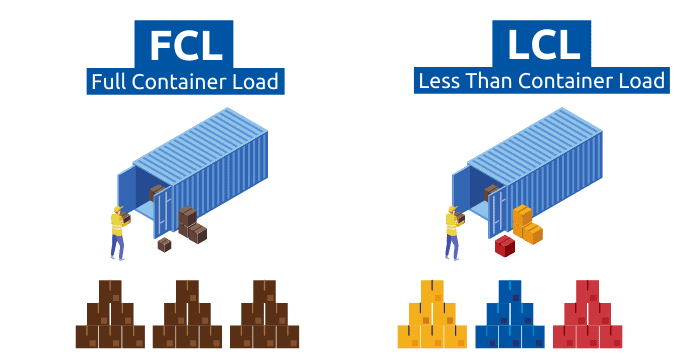Choosing the best sea freight from Shenzhen to Italy is essential for companies managing long-distance transportation and stable supply chains. Although air freight is faster, sea freight remains the most cost-effective and scalable method for bulk cargo, industrial products, and long-term import programs. As a result, many Italian importers rely on sea freight to reduce operational expenses while maintaining predictable transit schedules.

Why Is Sea Freight from Shenzhen to Italy Important for Global Supply Chains?
Many international companies depend on sea freight because it offers affordable pricing, high capacity, and reliable routing across major global trade lanes. Furthermore, Italian ports such as Genoa, Livorno, and Venice provide strong customs efficiency and inland distribution networks. Consequently, importers can maintain steady inventory flow and predictable lead times despite seasonal market fluctuations.
What Shipping Options Are Available for Sea Freight from Shenzhen to Italy?
Sea freight provides several transportation modes to match different cargo sizes and business needs. Selecting the right mode ensures lower logistics costs and improved shipment efficiency.
Full Container Load (FCL)
FCL is ideal for large shipments requiring an entire container. It minimizes cargo handling, improves transit reliability, and provides better cost-to-volume value.
Less than Container Load (LCL)
LCL works well for smaller shipments that cannot fill a full container. Although it has longer processing times, it offers excellent cost savings for low-volume cargo.
Special Equipment Containers
Open-top, flat-rack, and refrigerated containers support oversized or temperature-sensitive products.
Door-to-Door Sea Freight
Door-to-door service combines trucking, ocean freight, customs clearance, and final delivery for a complete end-to-end solution.
| Mode | Cost Level | Best For | Limitations |
|---|---|---|---|
| FCL | Low | Large shipments | Requires full volume |
| LCL | Medium | Small shipments | Longer handling |
| Sea Freight | Low | Bulk cargo | Slow transit |
| Door-to-Door | Medium | End-to-end delivery | Higher cost |
| Express Courier | High | Urgent small parcels | Not for heavy cargo |
How Long Does Sea Freight from Shenzhen to Italy Usually Take?
Transit time depends on the route, carrier, and port congestion. Nevertheless, China–Italy shipping schedules remain stable throughout the year.
| Route | Transit Time | Notes |
|---|---|---|
| Shenzhen → Genoa | 28–35 days | Main import hub |
| Shenzhen → Livorno | 30–38 days | Strong inland network |
| Shenzhen → Venice | 32–40 days | Good for Northern Italy |
| Shenzhen → Naples | 32–42 days | Ideal for Southern Italy |
What Factors Affect the Cost of Sea Freight from Shenzhen to Italy?
Several pricing components shape the final shipping cost. Understanding these details helps importers optimize budgets and avoid unexpected fees.
| Cost Component | Impact | Description |
|---|---|---|
| Base Ocean Freight | High | Primary cost of container movement |
| LCL Charge per CBM | Medium | Applied for shared loads |
| Fuel Surcharge | Medium | Adjusted with market fuel prices |
| Terminal Handling | Medium | Port loading/unloading charges |
| Documentation Fees | Low | Customs paperwork fees |
What Real Case Studies Show the Benefits of Sea Freight to Italy?
Cargo: Industrial machinery
Volume: 28 CBM
Mode: FCL 20GP
Cost: USD 1,950
Transit: 31 days
Result: Stable supply for production needs
Volume: 12.5 CBM
Mode: LCL
Cost: USD 720
Transit: 36 days
Result: Efficient mid-volume replenishment
Volume: 1×40HQ
Cost: USD 2,850
Transit: 33 days
Result: Improved retail margin
What Documents Are Required for Sea Freight to Italy?
Accurate documentation ensures smooth customs clearance and prevents shipment delays.
| Document | Purpose |
|---|---|
| Bill of Lading | Contracts and confirms shipment |
| Commercial Invoice | Declares value to customs |
| Packing List | Details cargo packaging |
| HS Code List | Determines import duties |
| Certificate of Origin | Verifies production location |
| VAT/EORI | Required for Italian clearance |
Why Is Sea Freight Better Than Air or Rail for Certain Imports?
Sea freight offers unmatched cost-efficiency for heavy, bulky, or large-volume shipments. Although air transport provides faster delivery, its price limits practicality for non-urgent logistics. Furthermore, sea freight supports stable weekly sailings, predictable transit, and flexible container options that reduce long-term logistics pressure.
How Can Importers Optimize Sea Freight from Shenzhen to Italy?
Importers can optimize efficiency by consolidating smaller shipments, improving packaging density, shipping during off-peak seasons, and using accurate HS codes. Additionally, partnering with a reliable freight forwarder ensures smooth customs handling and end-to-end coordination.
Conclusion
Choosing the best sea freight from Shenzhen to Italy helps businesses maintain stable logistics operations, predictable transit times, and sustainable cost structures. Ultimately, selecting the best sea freight from Shenzhen to Italy enables importers to improve inventory flow, reduce supply chain risks, and strengthen long-term competitiveness in the Italian market.
Get Your Customized Shipping PlanFAQ
1. What is the best way to lower sea freight costs to Italy?
You can reduce overall cost by consolidating shipments, optimizing packaging, and avoiding high-demand seasons when possible.
2. How long does customs clearance usually take in Italy?
Clearance generally requires one to three days when all documents and HS codes are accurate and fully compliant with Italian rules.
3. Which cargo types benefit most from sea shipping?
Heavy machinery, raw materials, and bulk retail goods benefit due to stable capacity and lower overall transportation costs.
4. Is LCL shipping reliable for small import quantities?
LCL shipping provides dependable schedules and affordable pricing for small or medium shipments without needing full-container volume.
5. Do Italian ports support stable long-term supply chains?
Major ports offer strong facilities and frequent sailings, ensuring predictable cargo movement across Italy throughout the year.




